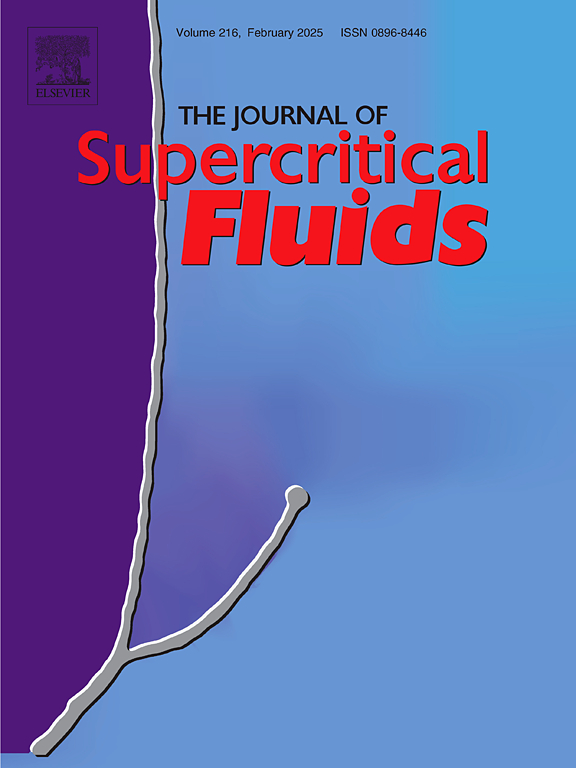Investigation of SO2-induced corrosion of X65 steel in gaseous, liquid, and supercritical CO2 environments through experimental and thermodynamic approaches
IF 4.4
3区 工程技术
Q2 CHEMISTRY, PHYSICAL
引用次数: 0
Abstract
Laboratory experiments and thermodynamic simulations were performed at 25 °C (8 MPa) and 35 °C (4, 8 MPa) to investigate the effects of SO2 on the corrosion of X65 steel and water chemistry during liquid, gaseous, and supercritical CO2 transportation. Results indicated that less than 100 ppm SO2 significantly influenced corrosion processes. In the water-saturated CO2 environment, higher SO2 concentrations led to elevated general corrosion rates. Interestingly, in the CO2-saturated water environment, the general corrosion rate decreased at 35°C, 4 and 8 MPa, whereas it increased with rising SO2 levels at 25°C, 8 MPa. SO2 worsened water chemistry by reducing the contents of CO32- and HCO3-, but enhancing the contents of H+, SO32- and HSO3-in the CO2-saturated water phase at each CO2 phase state. In the gaseous and supercritical CO2-saturated water environment, a thin or absent corrosion product was observed, with the adsorption of SO2 and its derivatives being the dominant factor. In the liquid CO2-saturated water environment, the corrosion product competed with SO2, HSO3-, and SO32- for adsorption sites, accelerating the corrosion rate.
通过实验和热力学方法研究二氧化硫诱导 X65 钢在气态、液态和超临界二氧化碳环境中的腐蚀问题
在25°C(8 MPa)和35°C(4,8 MPa)条件下进行了室内实验和热力学模拟,研究了SO2在液体、气体和超临界CO2运输过程中对X65钢腐蚀和水化学的影响。结果表明,低于100 ppm SO2对腐蚀过程有显著影响。在水饱和的CO2环境中,较高的SO2浓度导致总体腐蚀速率升高。有趣的是,在co2饱和的水环境中,一般腐蚀速率在35°C, 4和8 MPa时下降,而在25°C, 8 MPa时随着SO2水平的升高而增加。SO2通过降低CO32-和HCO3-的含量而恶化了水的化学性质,但增加了各CO2相态下CO2饱和水相中H+、SO32-和hso3的含量。在气态和超临界co2饱和水环境中,观察到稀薄或无腐蚀产物,SO2及其衍生物的吸附是主要因素。在液态co2饱和的水环境中,腐蚀产物与SO2、HSO3-和SO32-争夺吸附位点,加速了腐蚀速率。
本文章由计算机程序翻译,如有差异,请以英文原文为准。
求助全文
约1分钟内获得全文
求助全文
来源期刊

Journal of Supercritical Fluids
工程技术-工程:化工
CiteScore
7.60
自引率
10.30%
发文量
236
审稿时长
56 days
期刊介绍:
The Journal of Supercritical Fluids is an international journal devoted to the fundamental and applied aspects of supercritical fluids and processes. Its aim is to provide a focused platform for academic and industrial researchers to report their findings and to have ready access to the advances in this rapidly growing field. Its coverage is multidisciplinary and includes both basic and applied topics.
Thermodynamics and phase equilibria, reaction kinetics and rate processes, thermal and transport properties, and all topics related to processing such as separations (extraction, fractionation, purification, chromatography) nucleation and impregnation are within the scope. Accounts of specific engineering applications such as those encountered in food, fuel, natural products, minerals, pharmaceuticals and polymer industries are included. Topics related to high pressure equipment design, analytical techniques, sensors, and process control methodologies are also within the scope of the journal.
 求助内容:
求助内容: 应助结果提醒方式:
应助结果提醒方式:


